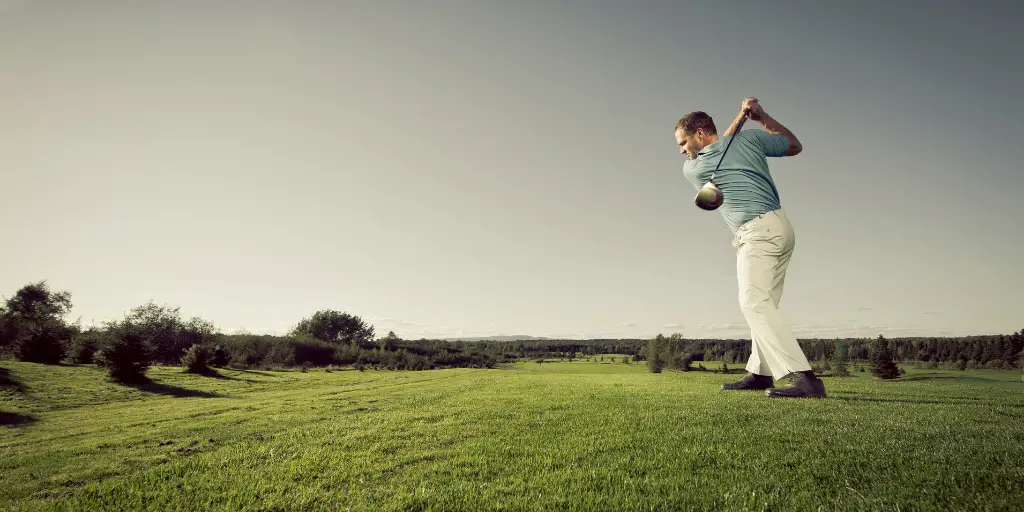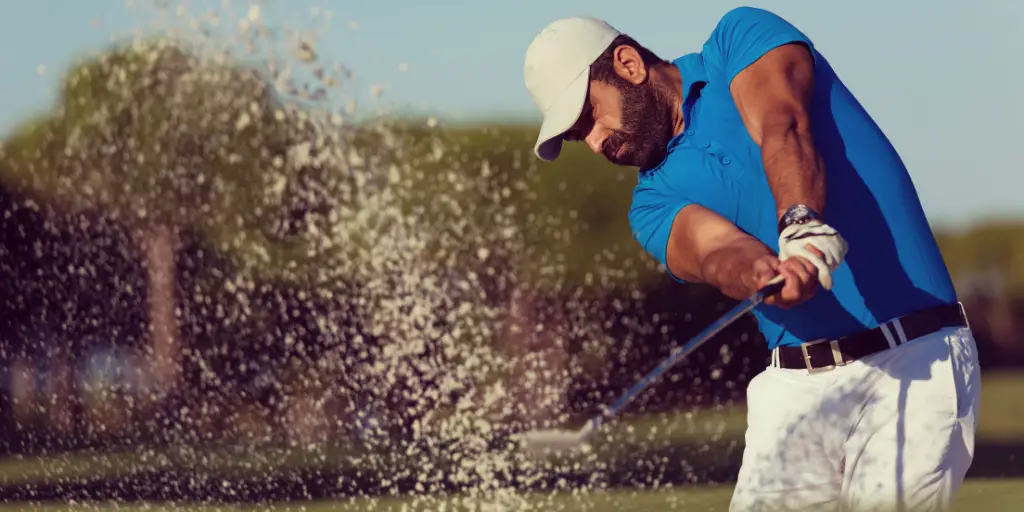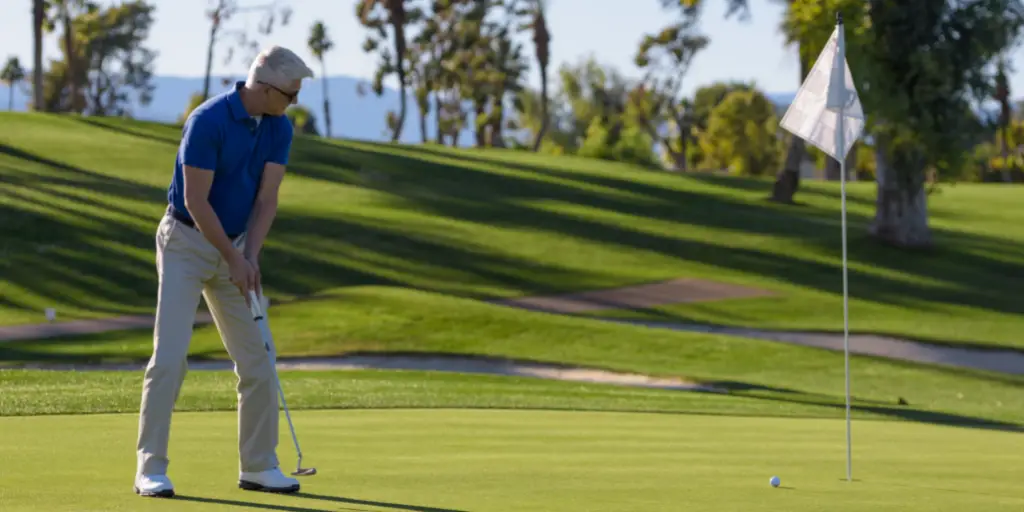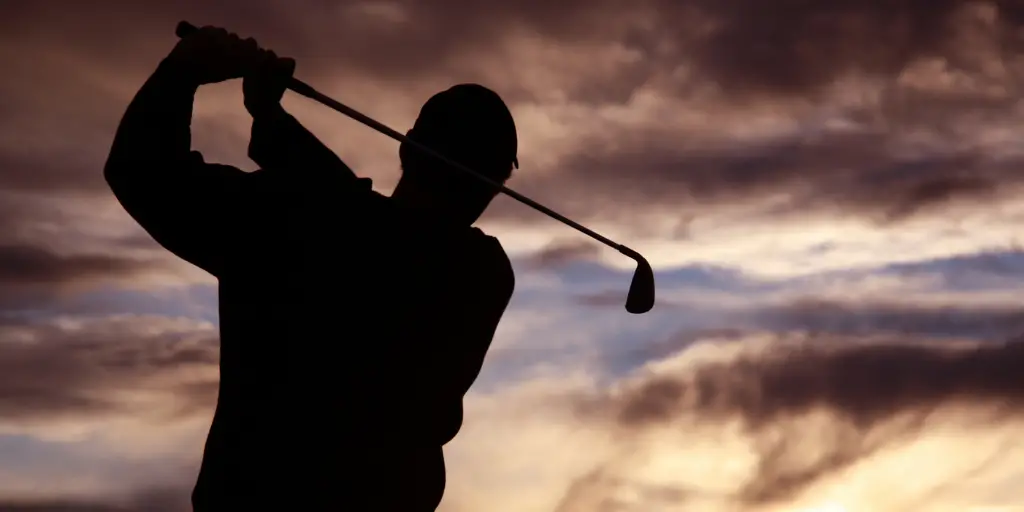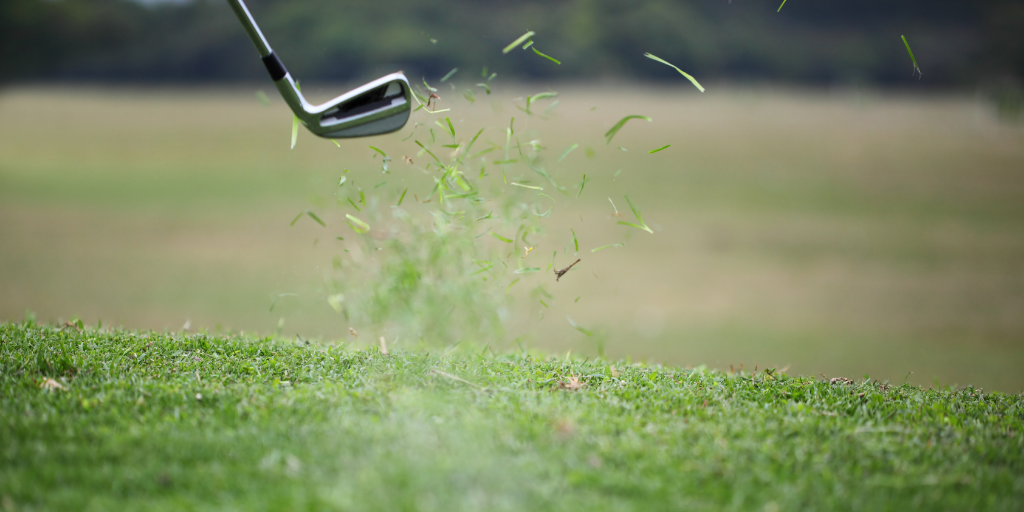Our goal for you after reading this article is to have the tools you need to begin the process of hitting a powerful draw.
If you have played much golf in your life, you have asked someone how to hit a draw. The problem is that the person you asked probably has no clue! Golf Digest, in an article in February of 2018, estimated that as many as 90% of golfers struggle with a slice.
When I first read that, it did not surprise me at all. When I first started playing golf, the draw was kind of the unicorn of golf shots to me. Not only could I not pull it off consistently, I could not hit a draw even once.
At some point, I stopped trying and I began playing a fade, which if I am being honest was really a slice most of the time, with varying degrees of success. I realized my problem was not that I could not hit one, my problem was that I did not know anyone who could teach me how to hit a draw and it just seemed too difficult.
Hitting a Draw
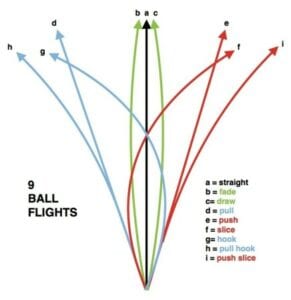
(image courtesy of thegolfacademy.org)
What Is a Draw?
For a right-handed golfer, a draw is a shot that curves from the player’s right to his left. A hook does the same thing, but with a huge sideways arc and often way off target.
A draw, on the other hand, is the shot that most golfers long for. A draw is considerably more consistent than a straight shot, especially with longer clubs. It is also longer and gets more roll than a fade.
If you are looking for pure distance, of course the straight shot is the longest, that is simple physics. On the other hand, if you want the most consistent shot that rolls the longest and helps performance on mishits, then learning how to draw the ball should be your goal.
What Factors In Your Swing Cause a Draw?
There are a lot of misconceptions about how to draw the ball, but there are 2 things that we can say, without any reasonable doubt:
- The starting direction of your shot is determined by the position of the clubface at impact. If your clubface is pointing straight, the ball will start straight; if it is pointing right the ball will start right; etc. Nothing else affects the direction that your ball starts more than the position of your clubface at impact. The funny and counterintuitive thing about hitting a draw is that your club face should be open at impact.
- The curve that your ball makes is in direct correlation with the angle of your swing path. If you want your ball to curve left then the angle of your swing path has to be more to the right than the angle that your club is pointing. Think of it as an “in-to-out” swing because your club head actually strikes the ball while angling right (or out).
That basically means that to draw the ball, whatever angle your clubface is pointing off-target, your swing path has to come right at a bigger angle. If it is too big, you will hook the ball and if it is too small then the ball will stay right.
To make this concept easy to understand, let’s say that you are hitting your 7-iron. With your 7-iron you have about a 2-to-1 relationship between the angle of your swing path and the angle of your clubface at impact. If your clubface is pointing 2 degrees off target, you need to come in at about 4 degrees to the right to get the ball to draw towards the target.
The higher the loft, the more difficult to hit a draw and the bigger swing angle you need, the lower the loft you need less of a swing angle.
If you want to hit the ball straight, your swing path should be going directly at the target with the face square at impact. If you want to draw the ball, your swing has to be from the inside-out and at about double the angle (depending on the club) that your club face is pointing away from the target at contact.
Here’s What You’ll Need to Start Learning to Hit A Draw
Start With Your 7-Iron
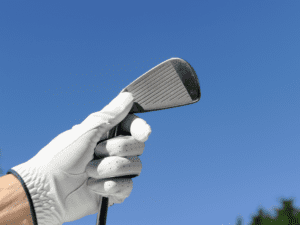
When you are first learning to hit a draw, the best place to start is your 7-iron. In general, 7-irons are fairly easy to hit consistently and you only need to come from about a 4-degree angle to have a noticeable draw. Drivers and woods are longer and more difficult to control while wedges and higher lofted irons need a higher inside-out angle to really notice the draw.
Alignment Sticks
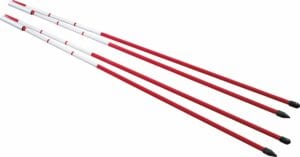
Alignment sticks are a great golf training tool that can be used to give you a visual of what an inside-out swing looks like. There are a few drills that you can run through to get more of a feel of how your body and club should look at impact to hit a draw.
You can use other clubs in lieu of alignment sticks, but alignment sticks are lighter, stick in the ground more easily (yes you will need this for some of the drills), and are the perfect length for many of the drills you will do. A set of alignment sticks just may be the best tool out there to teach you a draw.
Step-By-Step Instructions To Hit A Draw
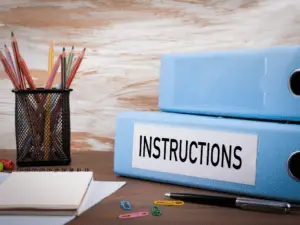
Setup
Not surprisingly, the instructions for hitting a draw starts at setup. Setup is where you figure out alignment, it is where you set your stance and your weight, and it is when you either open, close, or square your clubface to start your swing. Your setup puts you in the right frame of mind and right starting point to hit your draw. Here are a couple of hints followed by a video that will show you how to setup for a draw:
- You want a slightly closed stance which you accomplish by either moving your front foot in a little, your back foot back a little, or simply leaning forward with your upper body.
- You want a slightly open club face. This is somewhat counterintuitive because logically you want your club face closed at contact to give the ball the right to left spin. Remember: the curve of your ball comes from your swing path not the direction your clubface is pointing.
This is a great youtube video of Chris Ryan teaching some of these principles of setting up for a draw.
Back Swing
It is very difficult to change too much about your golf swing and expect to play well. When you are learning to hit a draw, one of the best things about it is that you do not have to change everything. The foundation of your swing stays the same, and that includes your back swing.
Swing Path
The swing path is where the movement of the ball comes from. If you are swinging from inside to outside, you will get that great right to left spin on the ball, and that is what you are looking for. You also have to be careful not to come at too large of an angle or you will simply hook the ball which is just as bad as the dreaded slice. Here are a few tips for an inside-out swing:
- Focus on hitting around your body rather than keeping the club straight.
- Drop your hands slightly when you begin your swing to get your hands in the right place.
- Focus on hitting back inside of the ball rather than trying to go straight through. You want to make impact on the inside part of your ball and bring it back around with the spin you created.
This is a video from the “WePlayGolf” Youtube channel. Tom uses alignment sticks and other teaching to show you how to develop an inside-out swing.
Start With Half Swings
You will not learn to draw the ball overnight. Do not expect to wake up tomorrow, take all of these tips, and then begin hitting shot after shot with the perfect draw towards the target. This is a difficult shot to make and especially if you have to change a lot about your swing to get there.
The best advice I can give is to pick a club, preferably the 7 or 8 iron, and start taking half swings at the ball with the principles that were taught above. Slowing down your swing will both give you a feel for what you are doing right and wrong and make it easier to make solid contact with every stroke.
After you learn one club, take half swings with another until you feel comfortable producing a draw consistently.
Conclusion
I certainly hope you enjoyed the tutorial and the videos that help you to see what these shots should look like. A draw is the most consistent and one of the most powerful shots in golf, and every player on the PGA Tour has this shot in their repertoire.
Following the instructions above and getting out on the course to practice them will have you learning how to draw the ball in no time. When you know how to consistently hit a draw, you will enjoy the game more and more with every shot.
If you enjoyed this article and found it informative, please share it and let other people know how it helped you. We would also love to hear your feedback or answer any questions you may have if you just leave those in the comments!

